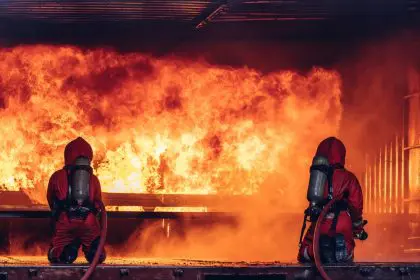As wildfires increase in frequency and intensity globally, homeowners face mounting pressure to protect their properties. These destructive events can transform communities in mere moments, making proactive protection measures essential for safeguarding homes and loved ones.
While the challenge of wildfire protection may seem daunting, specific strategies can significantly reduce risks and provide crucial protection when fire threatens. Taking systematic steps to prepare homes and properties helps create multiple layers of defense against advancing flames.
Creating defensive barriers
1. Establish defensible space
The first line of defense requires creating a buffer zone around your property. Clear dead plants, leaves and other flammable debris at least 30 feet from buildings. Regular trimming of trees, shrubs and grass prevents rapid flame spread while providing firefighters safer access if needed.
2. Choose fire-resistant materials
Home upgrades should prioritize fire-resistant materials, particularly in wildfire-prone regions. Non-combustible roofing options include metal, clay tiles or treated asphalt shingles. Exterior walls benefit from stucco, brick or fiber-cement siding to minimize fire risks.
3. Screen all vents
Wildfire embers pose a significant threat when they enter homes through vents. Installing 1/8-inch metal mesh screens over all exterior vents prevents these embers from igniting attics or crawl spaces from within.
4. Maintain clean surfaces
Regular cleaning of roofs and gutters removes highly flammable dried vegetation. Installing gutter guards reduces debris accumulation while simplifying ongoing maintenance needs.
5. Plan strategic landscaping
Firebreaks like gravel paths or stone walls can slow or halt fire spread. Fire-resistant plants with high moisture content, such as lavender, sage and aloe vera, provide additional protection through strategic placement.
6. Store combustibles safely
Keep firewood and other flammable materials at least 30 feet from structures. Optimal placement includes uphill locations or areas less prone to fire spread. Avoid storing these materials near wooden walls, fences or decks.
7. Upgrade windows
Double-pane tempered glass offers superior heat resistance compared to single-pane alternatives. Non-combustible shutters and fire-resistant screens provide additional protection against radiant heat and airborne embers.
8. Prepare for evacuation
Despite thorough preparation, evacuation may become necessary. Develop and practice a family evacuation plan including escape routes, communication strategies and essential item checklists.
9. Install emergency equipment
Property protection requires readily available firefighting tools. Long garden hoses, sprinklers and fire extinguishers enable quick response to small fires before they escalate.
10. Monitor conditions
Staying informed about local fire conditions proves crucial given how rapidly wildfires spread. Emergency alerts and weather radio updates provide vital information for timely evacuation decisions.
Implementation strategies
Protecting homes against wildfires requires systematic implementation of these measures. Begin with the most critical upgrades based on local risk factors and gradually complete additional improvements as resources allow.
Creating defensible space often provides the highest initial impact. This fundamental step combines with structural improvements and emergency preparedness to form comprehensive protection.
Community impact
Individual home protection contributes to community-wide resilience. When neighbors implement these measures collectively, entire neighborhoods become better equipped to withstand wildfire threats.
Local fire departments often provide specific guidelines based on regional conditions. Following these recommendations while maintaining awareness of changing fire risks helps protect both individual properties and surrounding areas.
Long-term maintenance
Wildfire protection requires ongoing attention to maintain effectiveness. Regular inspection and maintenance of protective features ensures they function properly when needed most.
Seasonal changes may require adjustments to protection strategies. Spring cleaning, fall preparation and year-round monitoring help maintain optimal defense against fire threats.
Looking ahead
As climate conditions continue affecting wildfire patterns, home protection becomes increasingly important. Implementing these protective measures now provides crucial safeguards for current and future fire seasons.
The investment in wildfire protection offers both immediate and long-term benefits. Through careful planning and consistent maintenance, homeowners can significantly reduce their vulnerability to fire damage while contributing to community safety.
This story was created using AI technology.

















